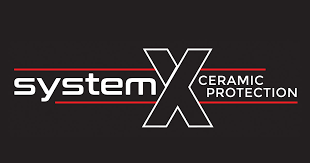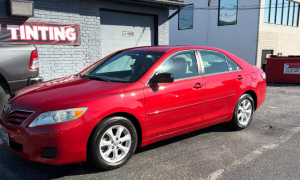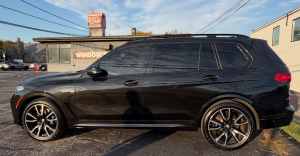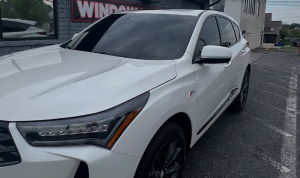If you’re on the fence about ceramic coatings, you’re not alone. Between online hype, DIY marketing, and the “this is just wax” crowd, it’s hard to know what’s real. This post is written for the pragmatic car owner who wants facts, practical expectations, and a clear way to decide if a professional ceramic coating is worth it.
Quick summary (if you don’t want to read the whole thing)
Ceramic coatings are advanced liquid polymers that bond to your vehicle’s clear coat. They’re not magic — they won’t make your car scratch-proof — but professionally applied ceramic coatings do provide long-lasting chemical resistance, UV protection, easier cleaning, and improved gloss compared with wax and sealants. For the best results you want a trained installer, proper prep (wash, decontaminate, and paint correction), and an agreed maintenance plan.
What ceramic coatings actually do (the benefits)
1. Chemical resistance and UV protection
Ceramic coatings form a thin, hard, semi-permanent layer that helps protect the clear coat from chemical etching (bird droppings, bug acid, industrial fallout) and reduces UV-induced oxidation and fading. That preserves the paint’s depth and color over time.
2. Hydrophobic surface — easier cleaning
Coatings are hydrophobic: water beads and runs off instead of soaking and sticking. Road grime and contaminants are less aggressive and much easier to rinse away, so washes take less time and are less abrasive on the paint.
3. Gloss and clarity
A properly applied ceramic coating enhances the depth and gloss of the paint. Unlike temporary wax, the gloss is more durable and resists washing off.
4. Reduced need for frequent waxing and short-term protection
Where wax or consumer sealants may last weeks or a couple months, professional ceramic coatings are engineered to last years with proper care. That reduces recurring maintenance costs and time.
5. Supports resale value
A genuine, well-documented coating combined with a maintained finish makes a car more attractive to buyers. A preserved finish can protect the vehicle’s perceived and actual resale value.
Common myths — debunked
Myth 1 — “Ceramic coating is just expensive wax”
Reality: Wax sits on top of paint and washes away in weeks. Ceramic coatings chemically bond to the clear coat and provide a hard, semi-permanent layer. They perform very differently in UV protection, chemical resistance, and longevity.
Myth 2 — “Coatings make my car scratch-proof”
Reality: No. Ceramic coatings resist minor marring and light scratches better than unprotected paint, but they do not stop rock chips, deep scratches, or door dings. For mechanical impact protection, PPF (paint protection film) is the solution.
Myth 3 — “Once applied, I never have to care for the paint again”
Reality: Coatings reduce maintenance but do not eliminate it. Regular washing with pH-neutral shampoo, avoiding abrasive brushes, and periodic inspections/top-ups keep the coating functioning properly. Many systems recommend a maintenance spray or professional inspection every 6–12 months.
Myth 4 — “DIY kits are the same as professional coatings”
Reality: Consumer kits are often lower-grade products, and many home garages can’t achieve the contamination-free prep environment and proper curing conditions required for professional coatings. Improper application can lead to high spots, streaking, or a weaker bond.
Myth 5 — “Ceramic coatings void my manufacturer warranty”
Reality: Properly applied coatings do not void factory paint warranties. Problems arise when installation damages the vehicle (e.g., cutting or removing trim incorrectly). Use a certified, reputable installer to avoid warranty issues and to ensure correct procedures.
Myth 6 — “Coatings always yellow or peel”
Reality: High-quality ceramic coatings applied correctly do not yellow. Yellowing or peeling is usually caused by poor product quality, inadequate prep, surface contamination, or incorrect curing. Choose reputable coatings and certified installers to avoid these issues.
How much protection should you expect? (set realistic expectations)
- Chemical stains / bird droppings / bug splatter: significantly reduced risk when removed promptly. Coatings make removal easier and reduce long-term etching.
- Light swirl marks and micro-marring: less visible and easier to correct; coatings don’t prevent aggressive polishing or contact damage.
- Rock chips / stone strikes: coatings will not prevent these — PPF is the correct protection for these hazards.
- Longevity: professional coatings commonly offer protection measured in years (typical ranges are 2–5 years for many commercial-grade systems); exact lifespan depends on product, prep, environment, and maintenance.
Professional vs DIY — why professional installation matters
A coating is only as good as the surface it bonds to. Professionals offer:
- Paint correction: removing embedded contaminants, swirl marks, and oxidation before coating.
- Controlled environment: dust- and humidity-controlled space that helps the coating cure properly.
- Certifications and warranties: many manufacturers require certified installers for a valid warranty.
- Long-term support: maintenance advice, inspection intervals, and spot treatments.
DIY application without correction and a clean environment frequently leads to unsatisfactory results that are costly to fix later.
Cost vs. value — is it worth it?
Ceramic coating is an upfront investment. Factors that influence the value:
- Vehicle age and condition: newer or freshly corrected paint benefits more.
- Driving environment: salty roads, industrial fallout, heavy sun exposure increase the value of protection.
- Time and convenience: if you value less frequent washing and easier maintenance, coatings pay back in time saved.
- Resale plan: buyers notice a well-maintained finish — coatings backed by receipts and warranty help.
If you’re comparing line items: wax/sealants are cheap and recurring; ceramic coating costs more initially but can reduce lifetime maintenance expenses and preserve appearance/resale value.
Maintenance: how to keep the coating working its best
- Wait for proper curing — follow the installer’s post-apply instructions (often 24–72 hours or longer).
- Wash correctly — pH-neutral car shampoo, two-bucket method, microfiber mitts. Avoid automatic roller brushes.
- Top-ups — use maintenance sprays recommended by your installer every 6–12 months to renew hydrophobic properties.
- Prompt spot cleaning — bird droppings and tree sap should be removed quickly. The coating makes removal easier but not automatic.
- Annual inspection — have a pro check the coating’s water beading and gloss; they can recommend a light refresher if needed.
Questions to ask your installer (so you’re not left guessing)
- Which coating product and grade are you using? (brand + expected lifespan)
- Is paint correction included? If not, can you see photos of corrected vs uncorrected work?
- Is there a dust-controlled area for curing?
- What’s the exact aftercare and what maintenance is required to keep the warranty valid?
- Do you provide a written warranty or certificate of installation?
Final recommendation for skeptics
If you want improved durability against chemicals and UV, easier cleaning, and a longer-lasting gloss than wax can deliver, a professionally applied ceramic coating is a sensible, measurable upgrade. If you want chip protection, add PPF to vulnerable areas (front bumper, leading edge of hood, mirrors). Don’t expect miracle scratch-proofing — expect a higher-performing finish with realistic maintenance and a proper installer.
Ready to see it in person?
At Ideal Image Auto Salon we use professional-grade products and follow a documented prep → correction → coating → cure process. If you’re skeptical, bring your car in for an honest inspection and we’ll show you the difference a proper paint correction and coating can make.
Ideal Image Auto Salon
7901 Belair Rd, Nottingham, MD 21236
Phone: (410) 663-8468





